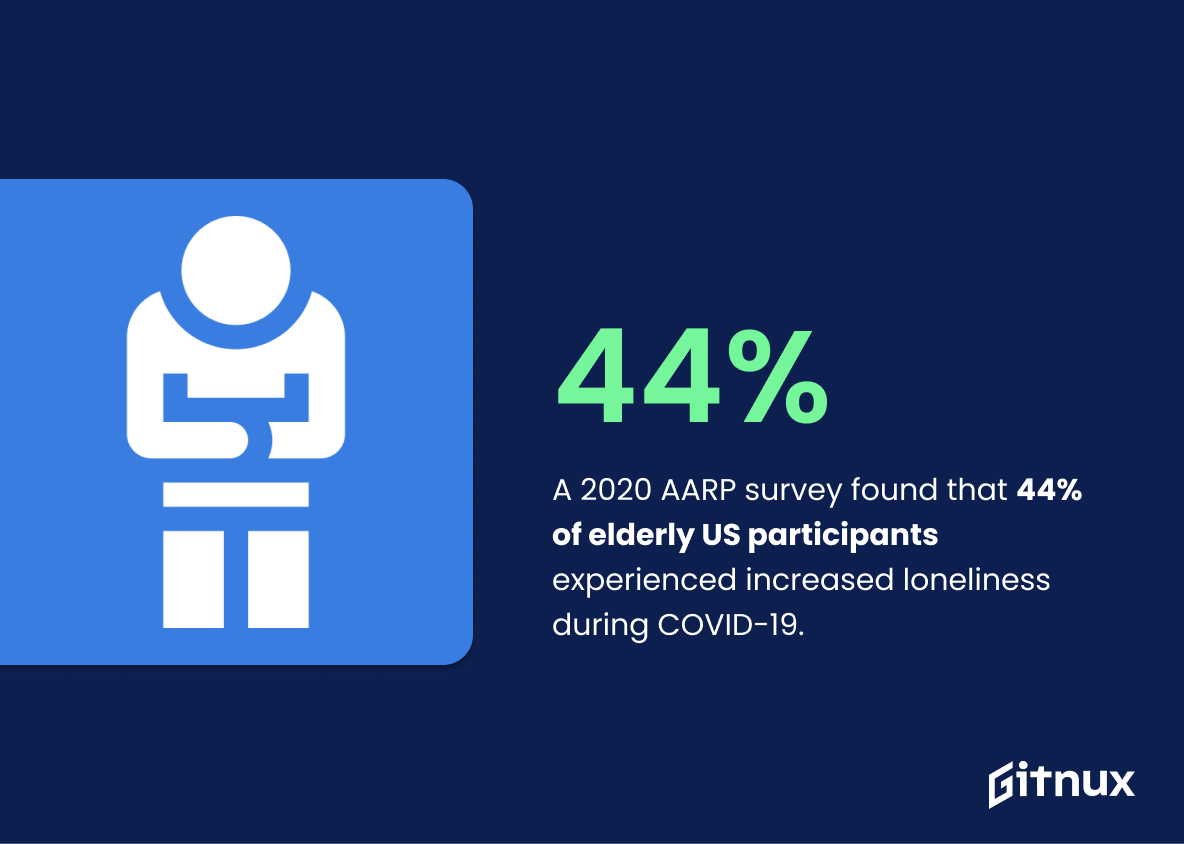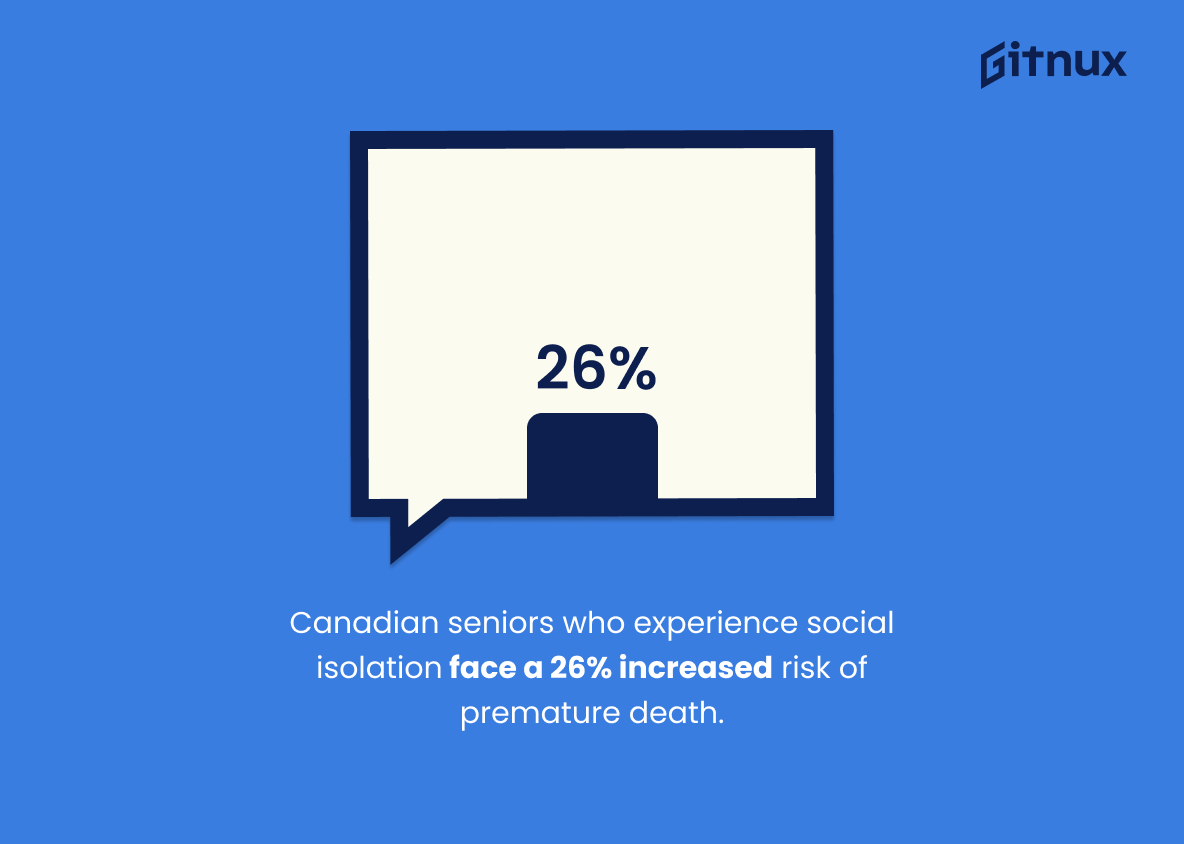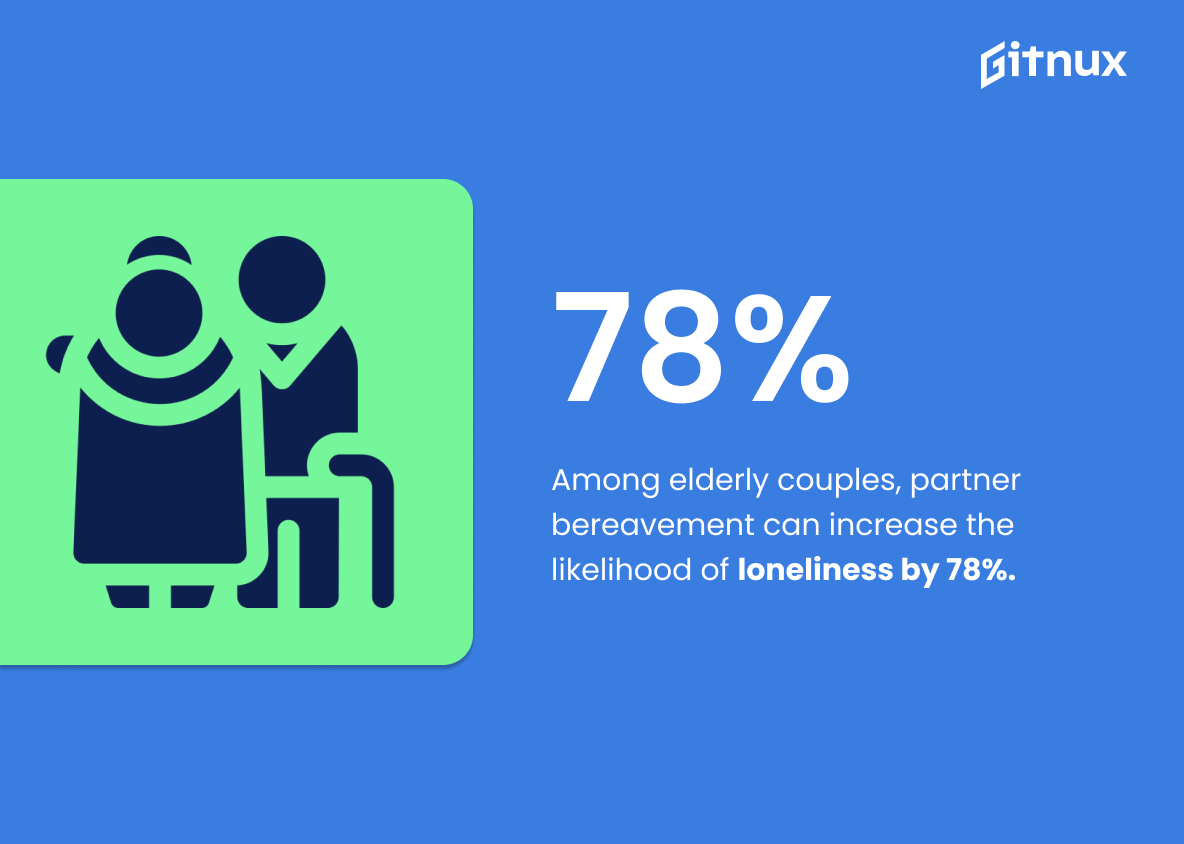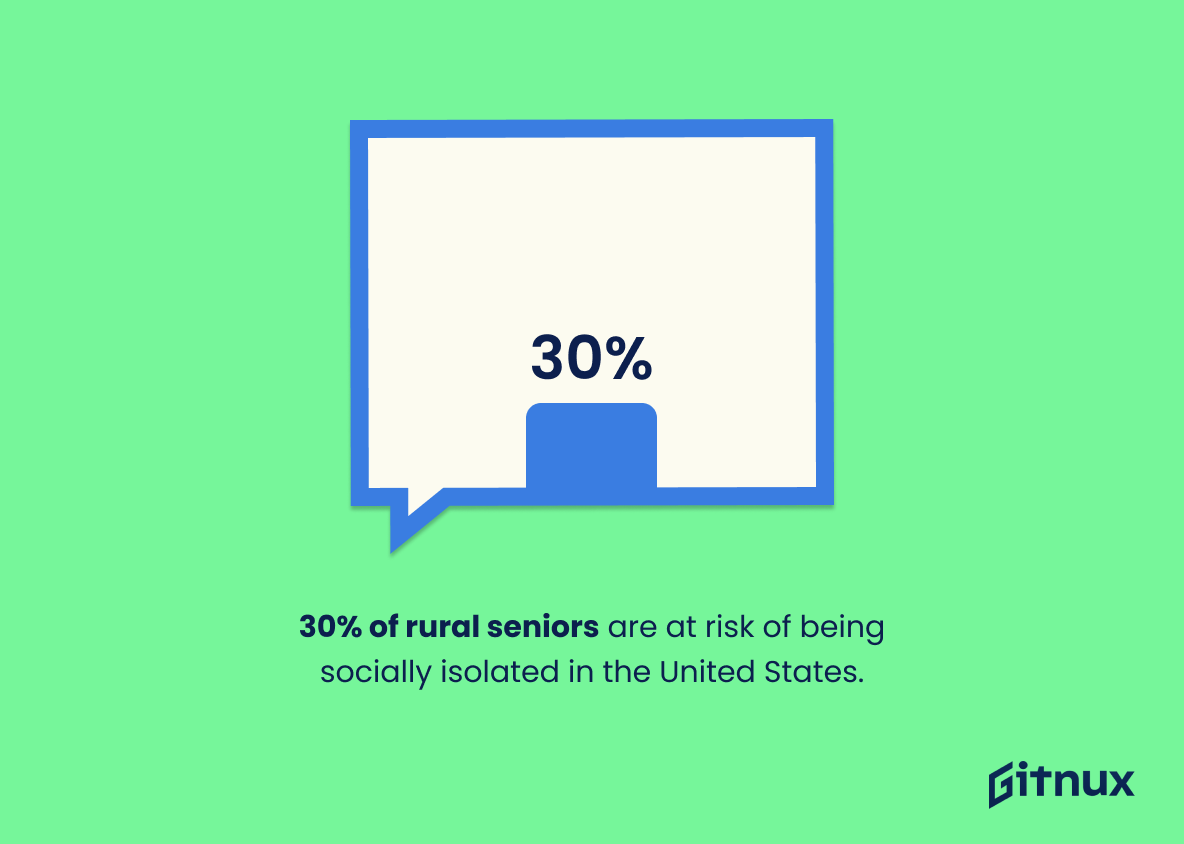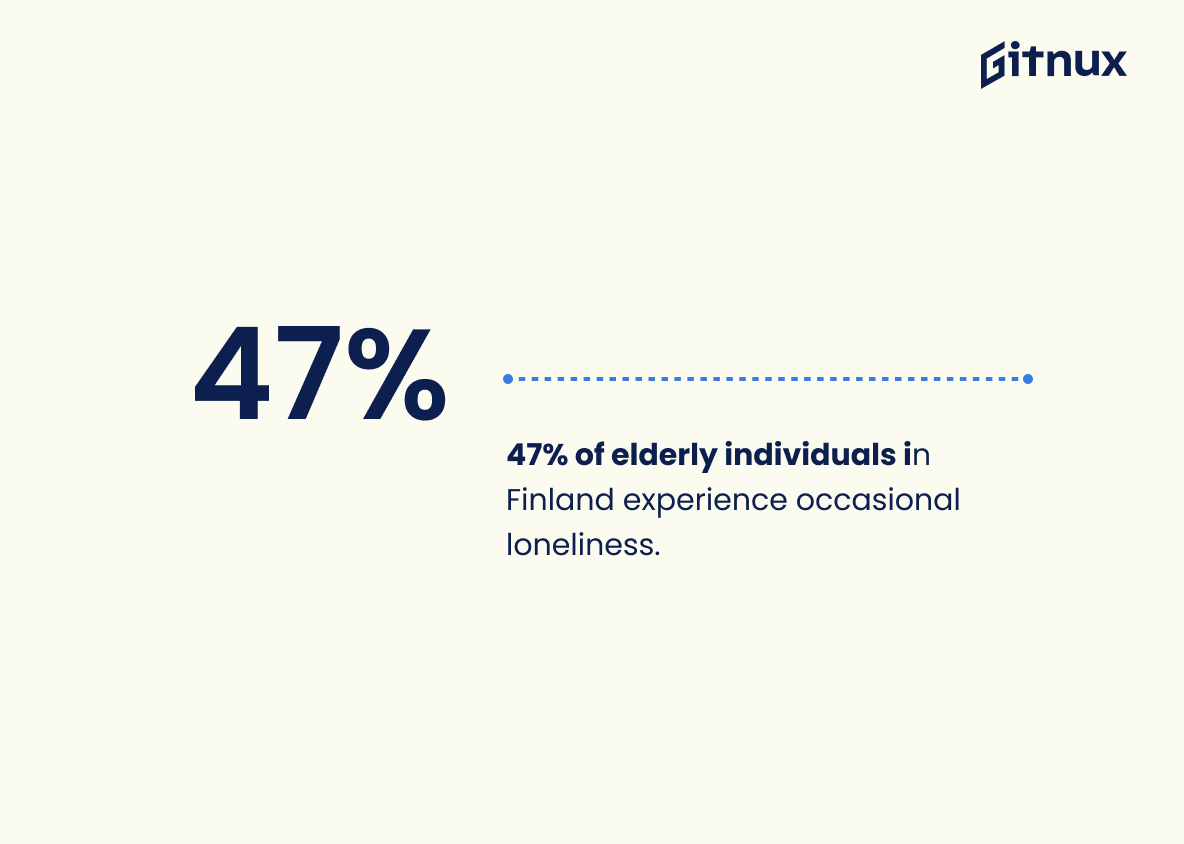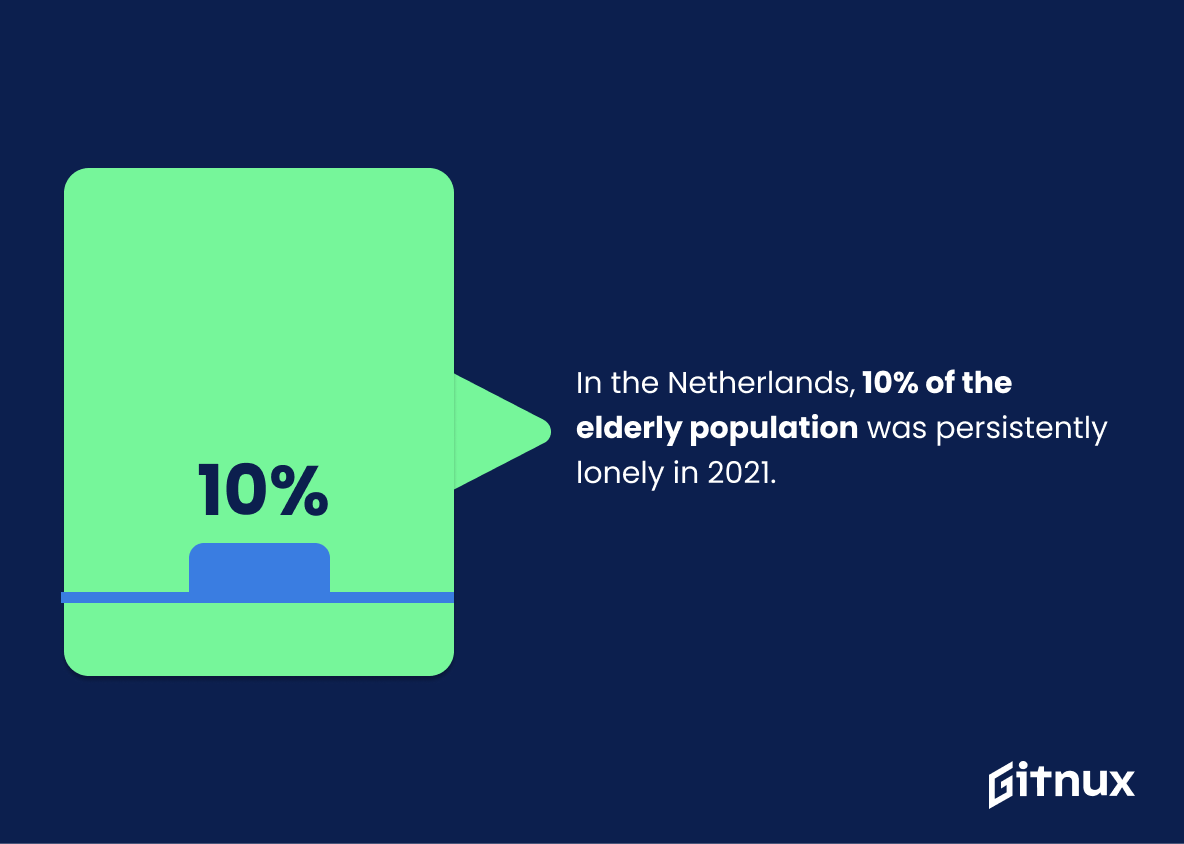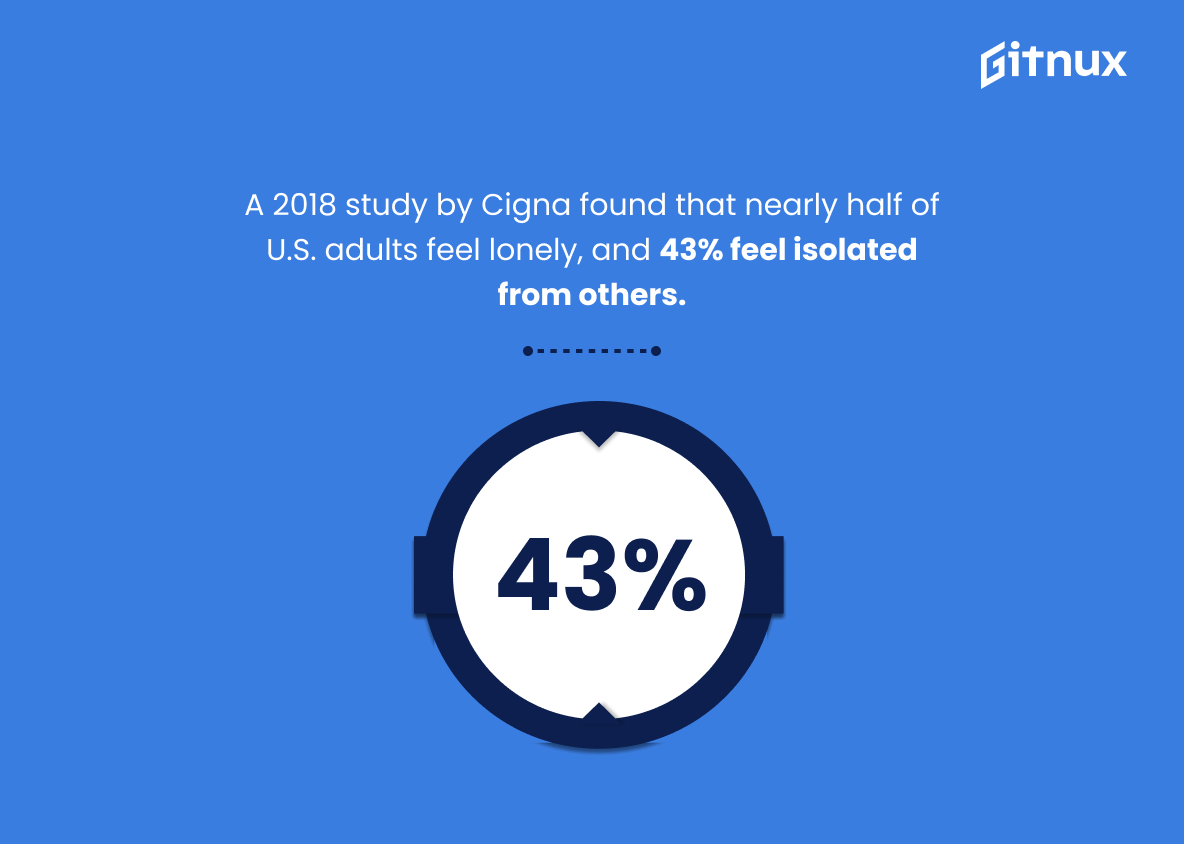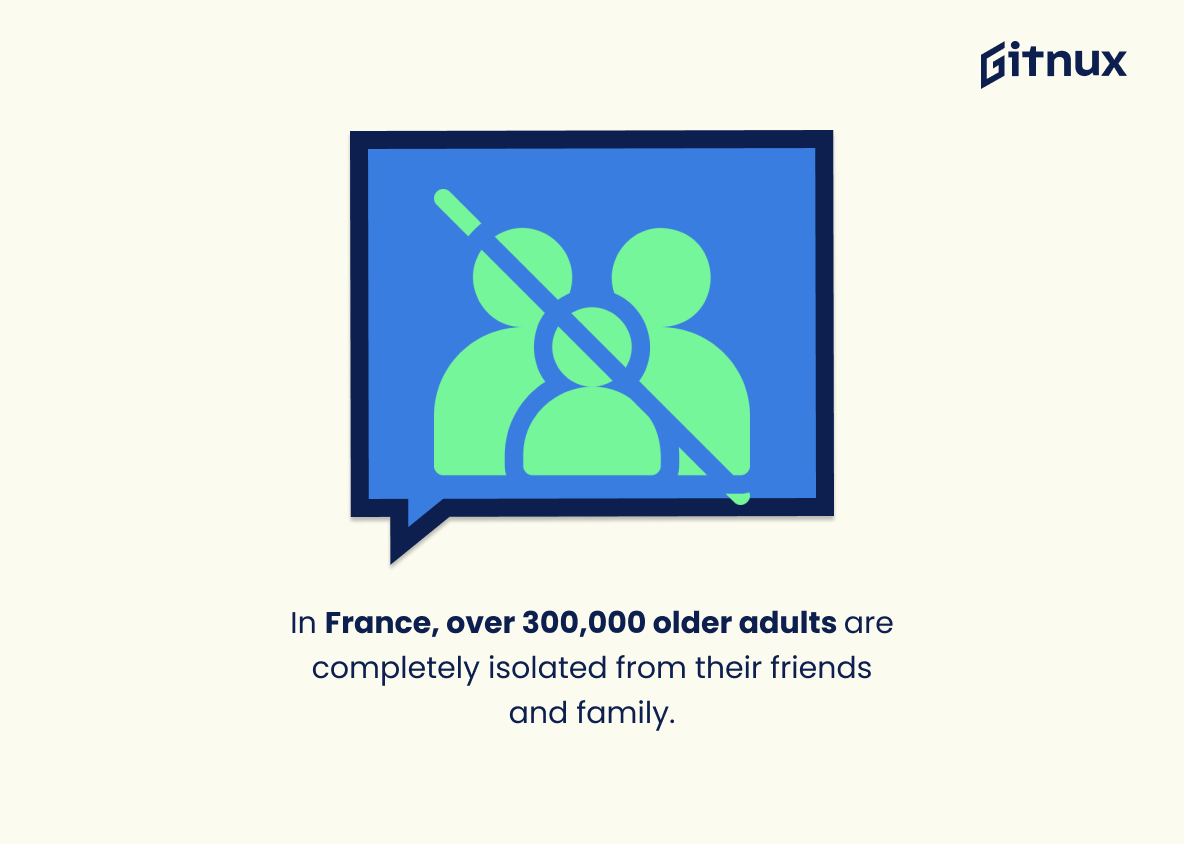The statistics on elderly isolation are alarming. Approximately 7 million American seniors, age 65 or older, are long-term survivors of elder isolation and 42% of Americans over the age of 60 years (over 16 million people) report feeling lonely. In the UK alone, over 3.9 million elderly individuals claim that their television is their chief source of company while a 2020 AARP survey found that 44% of elderly US participants experienced increased loneliness during COVID-19. Canadian seniors who experience social isolation face a 26% increased risk of premature death and 33% of elderly Australians report feelings of loneliness or social isolation. Elderly men over the age 80 are five times more likely to suffer from isolation with approximately 9 million seniors in the UK experiencing chronic loneliness; in Germany around 3.3 million people aged 65+ affected by loneliness or isolation; and an estimated 6.7 billion dollars spent annually due to Medicare costs associated with isolated elders in America – just to name a few staggering figures related to this issue worldwide.
Elderly Isolation Statistics Overview
A 2020 AARP survey found that 44% of elderly US participants experienced increased loneliness during COVID-19.
This statistic is a stark reminder of the impact of COVID-19 on the elderly population. It highlights the fact that the pandemic has had a significant effect on the mental health of the elderly, with a large proportion of them feeling more isolated and lonely than ever before. This statistic is a powerful reminder of the need to ensure that the elderly are supported and connected during this difficult time.
Canadian seniors who experience social isolation face a 26% increased risk of premature death.
This statistic is a stark reminder of the potentially fatal consequences of social isolation among Canadian seniors. It highlights the urgency of addressing the issue of elderly isolation and the need for effective interventions to reduce its prevalence. It serves as a call to action for individuals, families, and communities to come together to ensure that seniors are not left alone and isolated.
33% of elderly Australians report feelings of loneliness or social isolation.
This statistic is a stark reminder of the prevalence of loneliness and social isolation among elderly Australians. It highlights the need for greater awareness and understanding of the issue, as well as the need for more effective strategies to address it. It is a call to action for all of us to take steps to ensure that our elderly population is not left feeling isolated and alone.
Elderly men over the age of 80 are five times more likely to suffer from isolation.
This statistic is a stark reminder of the reality that elderly men over the age of 80 are disproportionately affected by isolation. It highlights the need for greater awareness and action to address this issue, as well as the need for more resources to be allocated to helping elderly men in this age group.
In Germany, around 3.3 million people over the age of 65 are affected by loneliness or isolation.
This statistic is a stark reminder of the prevalence of loneliness and isolation among the elderly in Germany. It highlights the need for greater awareness and action to be taken to ensure that elderly people are not left feeling isolated and alone. It is a call to action for those in positions of power to take steps to ensure that elderly people are not forgotten and that their needs are met.
Among elderly couples, partner bereavement can increase the likelihood of loneliness by 78%.
This statistic is a stark reminder of the devastating impact that partner bereavement can have on elderly couples. It highlights the fact that the elderly are particularly vulnerable to loneliness when they lose their partner, and that this loneliness can have a profound effect on their quality of life. This statistic is a powerful reminder of the importance of providing support to elderly couples who have experienced the loss of a partner, and of the need to address the issue of elderly isolation.
30% of rural seniors are at risk of being socially isolated in the United States.
This statistic is a stark reminder of the reality that many elderly individuals in rural areas are facing: the risk of social isolation. It is a call to action to ensure that seniors in rural areas are not left behind and are provided with the resources and support they need to remain connected to their communities. This statistic is a powerful reminder that elderly isolation is a real issue that needs to be addressed.
47% of elderly individuals in Finland experience occasional loneliness.
This statistic is a stark reminder of the prevalence of loneliness among elderly individuals in Finland. It highlights the need for greater awareness and understanding of the issue, as well as the need for more effective strategies to combat it. It is a call to action for those who are in a position to make a difference in the lives of elderly individuals in Finland.
In the Netherlands, 10% of the elderly population was persistently lonely in 2021.
This statistic is a stark reminder of the reality of elderly isolation in the Netherlands. It highlights the fact that a significant portion of the elderly population is suffering from loneliness, a condition that can have serious physical and mental health consequences. It is a call to action for us to take steps to ensure that our elderly population is not left behind and that they are supported in their later years.
A 2018 study by Cigna found that nearly half of U.S. adults feel lonely, and 43% feel isolated from others.
This statistic is a stark reminder of the prevalence of loneliness and isolation among U.S. adults, particularly among the elderly. It highlights the need for greater awareness and understanding of the issue of elderly isolation, and the importance of providing support and resources to those who are affected.
61% of older adults in the US who reported being lonely also said they were in fair to poor physical health.
This statistic is a stark reminder of the physical toll that loneliness can take on older adults in the US. It highlights the importance of providing social support and companionship to elderly individuals, as it can have a direct impact on their physical health.
In France, over 300,000 older adults are completely isolated from their friends and family.
This statistic is a stark reminder of the reality of elderly isolation in France. It paints a vivid picture of the sheer number of older adults who are facing the loneliness and lack of social interaction that comes with being completely cut off from their loved ones. It serves as a powerful reminder of the importance of providing support and companionship to our elderly population.
Conclusion
The statistics presented in this blog post demonstrate the prevalence of elderly isolation around the world. Approximately 7 million American seniors, age 65 or older, are long-term survivors of elder isolation and 42% of Americans over 60 years old report feeling lonely. In the UK alone, 3.9 million elderly individuals claim that their television is their chief source of company while 44% experienced increased loneliness during COVID-19 according to an AARP survey from 2020. Canadian seniors who experience social isolation face a 26% increased risk of premature death and 33% of elderly Australians report feelings of loneliness or social isolation as well. Elderly men over 80 are five times more likely to suffer from isolation than other demographics and approximately 9 million seniors in the UK experience chronic loneliness on top that number rising even higher due to partner bereavement by 78%.
In addition, 30% rural US senior citizens are at risk for being socially isolated with 50+ percent experiencing it in South Korea too; 47 percent feel occasional loneliness in Finland; 1 out 3 Irish adults feel lonely or socially isolated; 10 percent Dutch elders were persistently lonely last year; nearly half U.S adults reported feeling both lonely (48%) and isolated (43%); 61 % said they had fair/poor physical health when reporting lonliness – all these numbers point towards a global issue which needs attention now more than ever before.
References
0. – https://www.www.ncbi.nlm.nih.gov
1. – https://www.www.cigna.com
2. – https://www.www.ageuk.org.uk
3. – https://www.www.connexionfrance.com
4. – https://www.nationalpost.com
5. – https://www.www.dw.com
6. – https://www.www.cbs.nl
7. – https://www.www.cambridge.org
8. – https://www.www.aarp.org
9. – https://www.kb.rspca.org.au
10. – https://www.www.academia.edu
